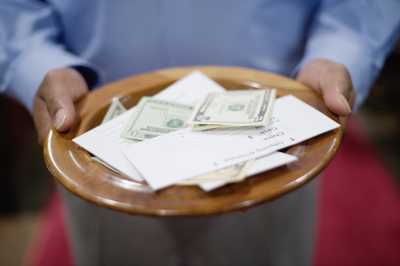5 reasons why the disappearance of the offering plate is so significant for churches

My childhood memories are vague. Still, I do recall with some surprising detail the passing of the offering plates in my first church. I never questioned its validity or efficacy. It was just something churches did.
Most churches used an offering plate or its equivalent prior to the pandemic. Now, most churches do not. It has been that stark and sudden.
The offering plate is disappearing.
One of the members of our Church Answers community conducted a simple poll that asked other members of the community if their church still passed an offering plate. The results were clear and profound. Seven of ten churches no longer pass the offering plate.
While the sample size and selection of the poll would not pass scientific rigors, the numbers are telling. Even among smaller churches, the offering plate is disappearing.
Rather than analyzing the reasons for the disappearing offering plate, let’s take a look at some of the implications of this dramatic shift. There is more to it than a mere removal of a traditional element of worship service. Indeed, the change is very important. Here are five reasons why the disappearance of the offering plate is so significant.
1. Online giving is now the default of the majority of churches. When COVID dictated that most churches would not be open for a season, there were no worship services to pass offering plates. In a figurative blink of an eye, churches that never considered online giving made the move. This change is not trivial. It means that church leaders must continuously point church members to digital giving as their means of stewardship. The offering plate served as the visual reminder to give generously. That void must now be filled.
2. The offering plate communicated clearly that the act of giving is an act of worship. Indeed, this reason is the most often articulated rationale of the remnant of churches that still pass a plate in worship services. Church leaders now must find and communicate ways to remind church members that the act of giving is an act of worship. A number of churches have a stewardship generosity moment during all of their worship services.
3. The offering plate will not return. While churches have resumed a number of pre-COVID practices, don’t count on the return of the offering plate. Once a church member gives online, he or she is unlikely to change behaviors. And church leaders now see clearly that online giving is more dependable. If a church member is out or if the church has to cancel a worship service, digital giving means that the funding will not stop.
4. Millennials do not like the passing of the offering plate; Gen Z abhors it. Though this statement is based on our anecdotal research only, I believe a scientific study will validate our observations. Millennials are not comfortable touching a plate touched by many other hands. Gen Z will avoid it completely.
5. The disappearance of the offering plate provides churches an opportunity to rethink all aspects of the worship services. While the offering may be the most visible change in church worship services, it would serve church leaders well to ask serious questions about other elements or aspects of the services. What are we doing because we’ve always done it that way? What could we change? What do we do that is non-negotiable and must not change? Why?
It happened so quickly. Soon, over 90 percent of churches will not pass an offering plate. The change is profound and sudden. Other changes are taking place as well. For example, the “stand and greet” time in worship services is all but gone as well. We will return to that subject in a future article.
Thom S. Rainer is the founder and CEO of Church Answers, an online community and resource for church leaders. Prior to founding Church Answers, Rainer served as president and CEO of LifeWay Christian Resources. Before coming to LifeWay, he served at The Southern Baptist Theological Seminary for twelve years where he was the founding dean of the Billy Graham School of Missions and Evangelism. He is a 1977 graduate of the University of Alabama and earned his Master of Divinity and Ph.D. degrees from The Southern Baptist Theological Seminary.




















